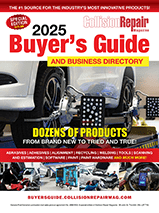At the four-year anniversary of the start of COVID-19, new and used car prices remain structurally inflated and will not return to pre-pandemic norms
However, some relief is coming for consumers: Prices will start to ease somewhat in the coming months, presenting the biggest buying opportunity in years
CHICAGO–(BUSINESS WIRE)–While the COVID-era inflation of many goods and services has started to return to normal levels, the car market presents a stark contrast: Prices will never return to pre-pandemic levels. At the four-year anniversary of the start of COVID in March 2020, car prices remain inflated at a structural level, with new car prices up 29% and used car prices up 34%. As a result, the traditional model of automotive car price forecasting has been upended. As car prices now move within this elevated “new normal,” CoPilot has created a Car Price Index that will track affordability in this adjusted context.
The fundamental shift in car pricing was first driven by increases to new car prices, which surged during the pandemic due to supply issues, increased production costs, and higher profit expectations by dealers and manufacturers. This created a years-long ripple effect that continues to keep supply low and prices high in the used car market as well. Consequently, it no longer makes sense to analyze used car prices – which used to move on a depreciation curve – in comparison to their original listing price.
“Traditionally, the saying went that a car would lose 10% of its value once you drove it off the lot,” said CoPilot CEO Pat Ryan. “The pandemic completely turned everything we knew about car pricing on its head. The historical depreciation curve doesn’t apply anymore, because used cars are actually more than 30% more expensive than they were four years ago. Used car prices are no longer tied to their original listing price: Instead, they are more closely correlated to current new car prices. So, for consumers, it’s much more useful to look at a used car in comparison to the cost of a comparable new vehicle – in other words, what it would cost to replace that car. Our Index tracks vehicle affordability through this new lens of structural inflation.”
As of March 2024, CoPilot’s Index found that foreign brands and larger vehicles like SUVs and pickup trucks had the highest replacement cost ratio (or smallest price difference between their new and used models). For consumers, this means that, when faced with the choice between a new and used model of a particular vehicle, they might as well buy new, since the used model is not significantly less expensive.
Among cars that saw the strongest inflation during COVID:
-
Foreign brands like Toyota and Kia – which were most impacted by supply chain issues during COVID
-
Toyotas are worth 63%, or 63 cents on the dollar, of a comparable new car, while Kias worth 60%, or 60 cents on the dollar, of their new counterparts
- This was driven by strong inflation in new cars: Kia Sorentos have surged by 35% in price since 2020, while Toyota Tundra prices jumped by 42%
-
Toyotas are worth 63%, or 63 cents on the dollar, of a comparable new car, while Kias worth 60%, or 60 cents on the dollar, of their new counterparts
-
SUVs and pickup trucks – which are more expensive to produce and in higher demand
-
Brands like Dodge and Jeep – which skew toward producing bigger vehicles – have the highest replacement cost among domestic brands, both 60% (or 60 cents on the dollar) of a comparable new car
- Again, this was in large part driven by new car inflation: new Dodge Durango prices, for instance, are up a staggering 55% since 2020
-
Brands like Dodge and Jeep – which skew toward producing bigger vehicles – have the highest replacement cost among domestic brands, both 60% (or 60 cents on the dollar) of a comparable new car
While prices are structurally more expensive, the silver lining for consumers is that new car inventory has reached a three-year high this month, currently at 64 market days supply on dealer lots. Dealers have already started offering incentives, and brands like Chrysler and Ram – which currently have inventory levels that are well above the market average, at 140 and 123 market days supply, respectively – will likely start to be impacted first.
“The bad news is that car prices are structurally inflated, and will probably never return to pre-COVID levels,” Ryan added. “The good news, though, is there is finally some relief on the horizon for consumers. Headed into the spring buying season, we can expect to see new car prices finally start to drop in March, while used cars will follow by mid-April – and conditions will likely remain favorable for consumers through at least Memorial Day. As these price drops trickle through the market, CoPilot’s Index will track vehicle affordability in the context of this new normal of fundamental inflation.”
About CoPilot
CoPilot is the leading AI-assisted car shopping app that provides consumers with an expert partner for high-consideration purchases, starting with car buying and ownership. The platform combines massive real-time data with a winning combination of human expertise and AI-powered search to introduce transparency to the shopping, purchasing and ownership journey. The mobile application takes the time, frustration, and guesswork out of the process, empowering people to easily navigate the risks of shopping for high-value items, and to buy with confidence at the right price and the right time.
Contacts
Kerry Close
kclose@groupgordon.com
732-609-2644

























